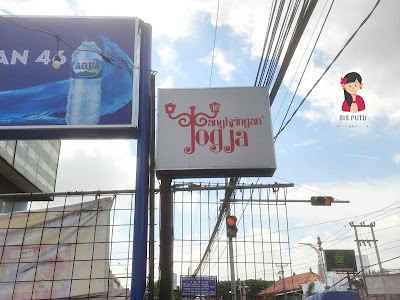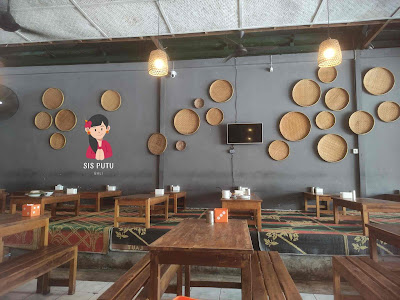Gudeg is a traditional Yogyakarta meal that takes a long time to prepare and celebrates sweet flavors with a hint of unique spices. Gudeg is a distinctive dish that is made from jackfruit stewed in a coconut milk sauce with different spices. The warm, delicate jackfruit meat in the gudeg dish combines with unique spices to create a flavor symphony that is difficult to forget.
To enjoy this Yogyakarta signature dish, we don't need to go
to Java. Nowadays, the gudeg menu has spread throughout Indonesia, including
Bali. We can eat gudeg in a stall called angkringan.
Angkringan, with a simple concept but rich in warmth, has
become an inseparable part of Indonesian people's lives. Here are some of the
unique things that make angkringan so special:
Having Simple and Go Green Concept
Angkringan offers a simple and intimate atmosphere, often with tables and chairs made from recycled materials.
Affordable Menu Variety
From coffee to snacks, angkringan serves a variety of menus
at affordable prices, making it an ideal place for all communities.
Understanding Balinese Community:
The Meaning Behind Balinese Names
Daily Atmosphere
Angkringan creates a space for people to gather, discuss and
enjoy a meal while feeling the warmth of chit and chat.
Because I missed eating gudeg, I visited an angkringan in
Denpasar. This angkringan is located in the busy Gatot Subroto area. The
building is a bit old, but clean. Inside, there are wooden tables and chairs
arranged in two areas.
Apart from gudeg, Angkringan Jogja offers a menu of typical
Yogyakarta food and drinks. There are various satays, grilled rice, and wedang
uwuh which is a body-warming drink.
Gudeg at Angkringan Jogja has a predominantly sweet taste.
My favorite is still krecek or spicy cowhide, which is soft and tasty. You can
choose several variations of gudeg, such as gudeg complete with egg, gudeg
chicken thighs, or gudeg chicken feet.
Angkringan has become an important part of Indonesian
culinary history. Once considered a place to enjoy coffee and snacks, now
angkringan has developed into a symbol of culture and lifestyle.
Enjoying gudeg in an angkringan in Denpasar makes me feel
like I'm traveling to Yogyakarta. You can try it at Angkringan Jogja, which is
located at 𝙹𝚊𝚕𝚊𝚗 𝚐𝚊𝚝𝚘𝚝
𝚜𝚞𝚋𝚛𝚘𝚝𝚘
𝚝𝚎𝚗𝚐𝚊𝚑
𝚗𝚘.
336, Denpasar, Bali.





Wow, Bali really has a complete culinary scene. Especially considering that tourists also love visiting Jogja. So, when they go to Bali, they can enjoy the culinary delights of two cities in one place.
ReplyDeleteGatsu ini deket monang maning bukan ya? Kalau mampir ke gatsu wajib deh ke angkringan ini, apalagi kalau kita para pendatang yang cari makanan halal. Inget gudeg, inget juga kreceknya.. suedep 🫰🫰
ReplyDeleteKangen gudeg
ReplyDeleteKangen kreceknya yang gurih pedas manis...
Bikin sendiri itu rasanya beda lho
Ah always miss gudeg deh hehe...
Boleh bgt nih di cobain mampir kesini kalau lg kangen sama gudeg.
ReplyDeleteI love angkringan, of course in traditional meaning. Angkringan which using rombong or gerobak to displaying any snack like sate2an and coffee
ReplyDeleteGudeg is one of Jogja signature meals but now, we can eat this food from every part of Indonesia. Alhamdulillah, we can met this meal in Bali..
ReplyDeleteMemang jadi makanan khas, kalo ke kotanya langsung pasti vibesnya beda pas menyantapnya
ReplyDeletewaah boleh dicoba nih ke Angkringan Jogja kalau lagi di Bali xixie vibesnya tetap sama yaa ini? Thanks sudah sharing
ReplyDeleteWhat a beautiful restaurant.
ReplyDeleteAlthough in Bali, there is a Central Javanese food menu that can be missed by Javanese people who live in Bali. Does the taste adjust to the Balinese tongue or still follow the original taste of Jogja, kak Putu?